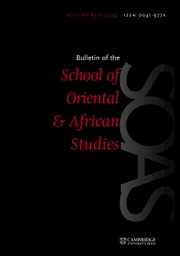Crossref Citations
This article has been cited by the following publications. This list is generated based on data provided by Crossref.
Caneva, Giulia
Lazzara, Alessandro
and
Hosseini, Zohreh
2023.
Plants as Symbols of Power in the Achaemenid Iconography of Ancient Persian Monuments.
Plants,
Vol. 12,
Issue. 23,
p.
3991.



